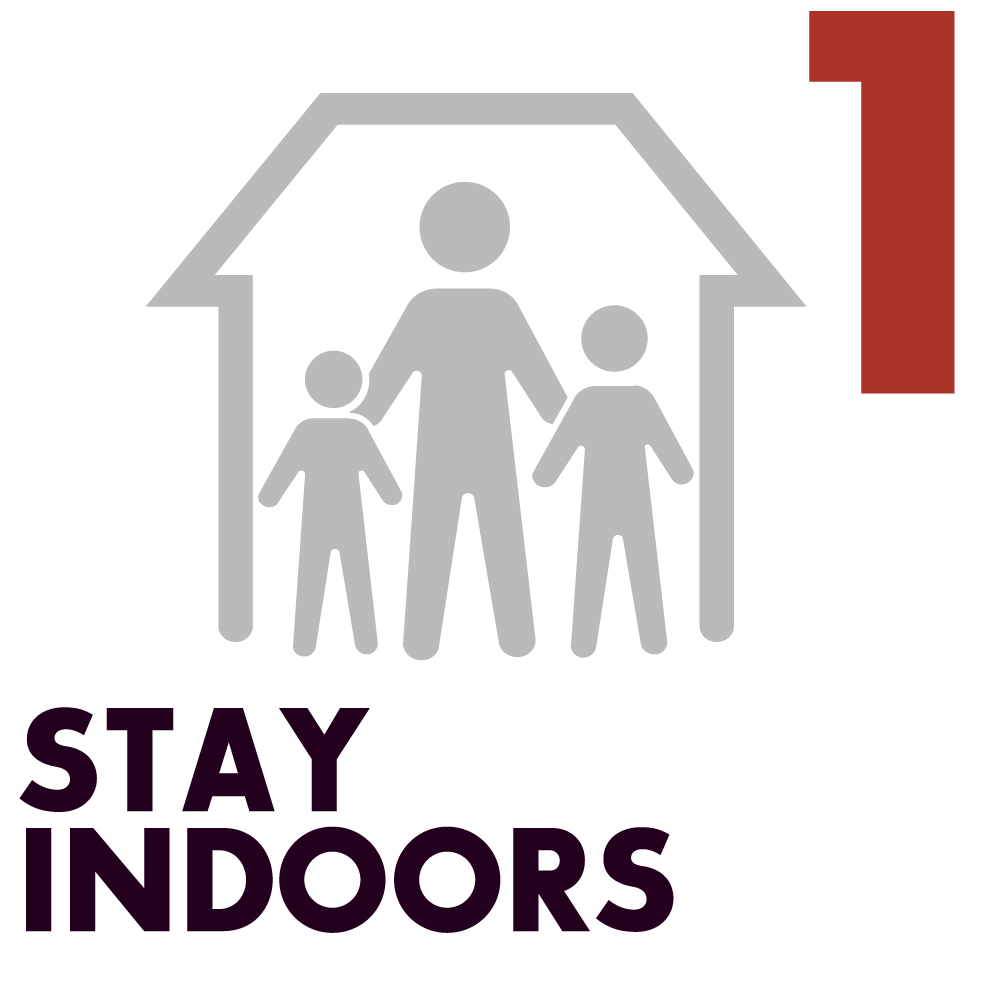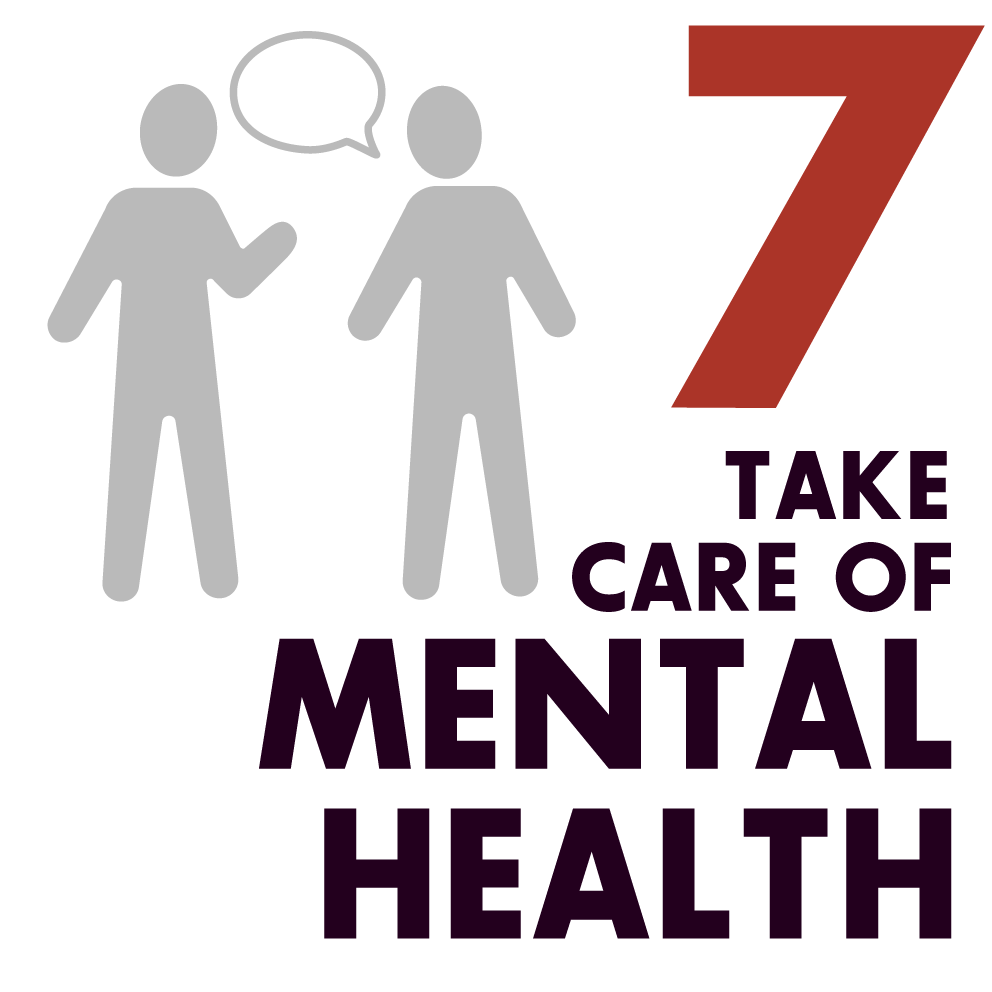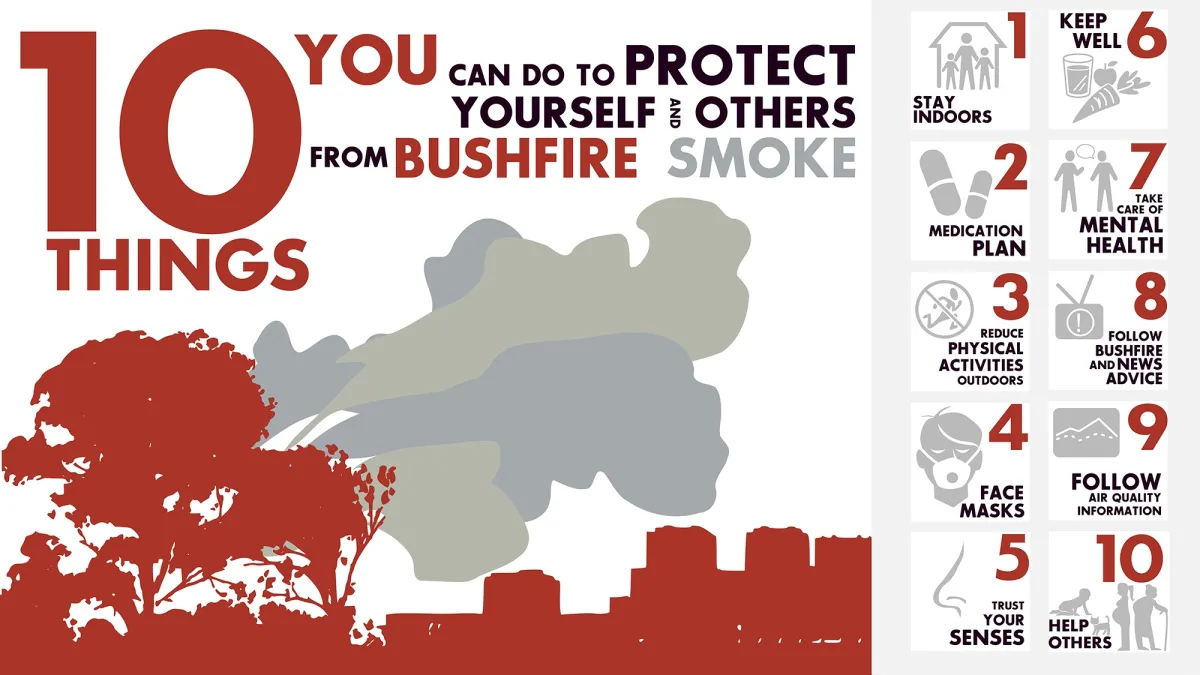Bushfire smoke comes from burning forests, trees and grass. It contains many different substances, from ash and particles we can see, to much smaller particles and gases. Very small particles (measured as PM2.5) in the smoke are invisible, but can affect our health as they are inhaled deeper into the lungs.
What are the health effects?
Most people who are exposed to smoke (away from the fire front) will be fine and recover quickly from any symptoms. Some people will notice irritation to eyes, a runny nose or a sore throat. Some people will notice a change in their breathing or a cough. Exposure to smoke over longer periods (several weeks or months) can increase the risk of lung disease. Exposure to bushfire smoke can also cause anxiety and distress.
Who is at higher risk
Some groups are more sensitive to smoke and should be particularly careful to minimise their exposure:

For people with respiratory diseases such as asthma, bronchitis or emphysema, exposure to smoke can trigger flare-ups and make breathing more difficult.

For people with heart disease, exposure to smoke increases the risk of angina (chest pain), heart attack, stroke, and irregular heart rate (palpitations).

For people with diabetes, exposure to smoke may cause slightly higher blood sugar levels.

For children (especially under 5 years) most will have no long-term health effects due to exposure to smoke. Long-term exposure to high levels of smoke over several seasons may affect lung development in a small proportion of children.

For pregnant women most will not experience problems due to smoke. For a small proportion, exposure to smoke over several weeks during pregnancy may slightly reduce the weight of their babies. This slight reduction is unlikely to have a long-term effect on the health of the babies.

For elderly people (especially those over 65 years), exposure to smoke can worsen existing health problems, such as lung and heart disease.
When levels of smoke (AQI) are unhealthy, very unhealthy or hazardous, it is best to:

Stay indoors
- Keep your home as clear of smoke as possible by keeping windows and doors closed during periods of hazardous air quality. In older or ‘leakier’ houses, filling gaps around the windows and doors with tape or towels may help keep the smoke out.
- Avoid any sources of smoke inside the home from smoking, burning candles or incense sticks. Ventilate at least once a day when the air outside is cleaner.
- If possible, use an air purifier with a high efficiency particulate air (HEPA) filter to reduce indoor smoke levels. Air conditioning (not evaporative coolers or humidifiers) on “recirculate” or “recycle” mode will also help.

Medication
Update your asthma, chronic obstructive pulmonary disease (COPD), heart disease, and diabetes management plan with your GP or treating doctor. If you don’t have an action plan, see your GP. Have adequate medications and inhalers at home for at least a few days.

Reduce physical activities outdoors
During periods of very unhealthy or hazardous air pollution, it is recommended that outside exercise be avoided. It may be reasonable to exercise indoors depending on access to gyms and pools with good air quality. It will be best to visit air-conditioned libraries, cinemas, and shopping centres where air will be cleaner.

Facemasks
P2 or N95 facemasks that fit well around the mouth and nose will reduce your exposure to smoke (PM2.5). Masks are not appropriate for children, and can make people with breathing difficulties feel uncomfortable.
Masks may be appropriate for those who cannot avoid being outdoors during periods of unhealthy, very unhealthy or hazardous air quality. Surgical masks, improvised cloth masks and bandanas offer little protection.

Trust your senses
When you smell and see smoke, levels of exposure are likely to be hazardous. If you feel symptoms (irritated eyes, running nose, irritated throat, coughing) reduce activities, stay indoors, and take lozenges and water-based eye drops if that helps you. If you feel difficulty breathing, wheezing or tight chest, seek urgent medical attention or call 000. When the sky is clear and the air feels fresh, it is a good time to be outdoors and enjoy your daily activities.

Keep well
Stay away from fires, smoke and heat as much as you can. Consider working from home when air quality is very unhealthy or hazardous. Schools may remain closed or reduce outdoors playing time on severe smoke days. Keep well hydrated, eat plenty of fruits and veggies. Most importantly quit smoking as it makes you more sensitive to air pollution. Antioxidant supplements (vitamin C and E) may help reduce the effect on your lungs of exposure to bushfire smoke, but don’t use them as a replacement for a healthy and balanced diet.

Take care of your mental health
People affected by bushfires often experience distress and this can affect their thoughts, feelings, behaviours, and relationships. This distress can be intense, confusing and overwhelming and may be felt at the time and/or weeks or months later. Understanding these normal reactions can help you prepare yourself and those around you during the crisis and after it has passed. It may also be helpful to talk with friends, family, other community members or to contact a helpline (such as ‘Lifeline’ and ‘Beyond Blue’). If you have concerns about your health and well-being, you can also visit your GP.

Follow bushfire news and advice
Follow the news about bushfires near your location (for example the NSW ‘Fires Near Me' app and local radio/TV). Make sure your bushfire survival plan is up-to-date, particularly if you live in a bushfire prone area (check your location here: ACT, NSW, VIC, SA, QLD, WA, NT, TAS). Your plan will help protect the lives of your family and assist you in preparing your home to survive the threat of bushfire.

Follow air quality information
Air quality can change rapidly due to changes in weather conditions. Follow the Air Quality Index (AQI) and PM2.5 levels near your location (using the 'AirRater' app). Current air quality readings (updated hourly) and 24-hour smoke forecasts where available can help you plan your daily activities in a way that minimises your exposure to smoke. Follow health alerts related to smoke levels in your area.

Help others
Remember it is important to care for and support those around you during bushfires. If you feel well and it is safe, check on others in your community, particularly elderly individuals, people with chronic illness, and those who live on their own.

